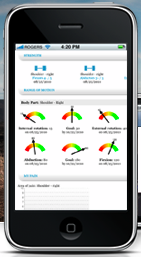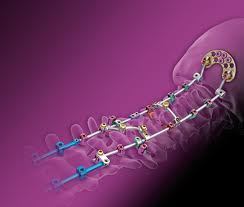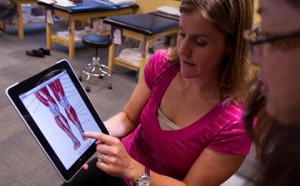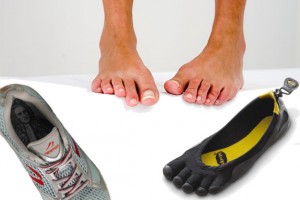For your viewing pleasure, the honorable Dr. Timothy Flynn.
Link to video
Hi-Tech at CSM
 As healthcare continues to integrate new web technologies, fittingly, there is an increase in the technology-based offerings at the APTA Combined Sections Meeting this year. This conference, the pinacle of the PT meetings each year in terms of attendence and scope of programming and exhibitors, will be in New Orleans.
As healthcare continues to integrate new web technologies, fittingly, there is an increase in the technology-based offerings at the APTA Combined Sections Meeting this year. This conference, the pinacle of the PT meetings each year in terms of attendence and scope of programming and exhibitors, will be in New Orleans.
I found this handy way to read down some of the HPA Technology SIG programming via a Google Group. You might notice one tech session is Connecting the Classroom and Clinic: Use of an International Collaborative Classroom Wiki. I’m particularly excited about this session, as Rachael Lowe, Elaine Lonnemann and myself will be presenting Physiopedia! Hope to see you there!
Of course you can always check out all the programming on the APTA’s event page.
iPad: PT’s New Best Friend?
By Bronwyn Spira, PT, and Tejal Ramaiya, DPT, CSCS
The iPad is quickly transforming the way business is conducted in the media, entertainment and education sectors. But what about health care? What are the specific benefits of the iPad for physical therapists and what should you be cautious about? As a clinic that has actively been using the iPad for about 6 months now, we have found a number of tangible benefits. Documentation is much faster and happens in real time with each visit. We can track and log the time of each modality, which is especially useful for insurance billing. The small, flat screen is less obtrusive than a laptop – We always felt the screen created a physical and potentially emotional barrier between my patients and myself. We also like that the ipad can be easily handed to the patient for demonstration of a video exercise or other visual aids.
A couple of notes of caution – the iPad doesn’t have a USB port or printer connection so document management is challenging. Current battery life is shorter than the 12-hour workday and common flash-based applications don’t work.
 The other issues we face when evaluating the iPad as a medical tool are fragility (it will break if dropped) and hygiene since it cannot be sterilized. The latter is probably less of an issue for physical therapists than other medical professionals, but certainly bears mentioning.
The other issues we face when evaluating the iPad as a medical tool are fragility (it will break if dropped) and hygiene since it cannot be sterilized. The latter is probably less of an issue for physical therapists than other medical professionals, but certainly bears mentioning.
The true future of iPad use within physical therapy clinics will depend on the availability of medical apps for clinicians. It seems inevitable that as our world becomes more and more technology focused we will have to start thinking about how to maneuver our own clinical landscape.
—
Bronwyn Spira, PT, and Tejal Ramaiya, DPT, CSCS authored this guest post. They can be found at Force Therapeutics or Twitter.com/ForceTherEx.
Sickening Report from WSJ
Spine Surgery Greed
 Already controversial, yet continually growing more common, instrumented spinal fusion surgery took a public relations hit in an article in today’s Wall Street Journal. “Top Spine Surgeons Reap Royalites, Medicare Bounty” is an excellent, if not disheartening piece of investigative health journalism.
Already controversial, yet continually growing more common, instrumented spinal fusion surgery took a public relations hit in an article in today’s Wall Street Journal. “Top Spine Surgeons Reap Royalites, Medicare Bounty” is an excellent, if not disheartening piece of investigative health journalism.
This piece is a must read for anyone involved in the care of patients with back pain, anyone with back pain, and hopefully, anyone involved in health policy that can help. Senator Grassley, You read this, right?
“One surgeon at a hospital in the Midwest disclosed receiving between $400,000 and $1.3 million in royalty, consulting and other payments from three spine-device makers. Using the Medicare-claims database, the Journal found this surgeon performed 276 spinal fusions on Medicare patients in 2008, by far the most of any surgeon in the country.”
Medical Illustration: Entertainment and Education
 One of my favorite activities in Augusta was/is to attend trivia at a local hang called, Helgas. Apart from the irony and inconvenience of the ultra smoke filled bar that’s frequented by graduate students at a medical college, it’s a solid game of trivia. It was always a treat for me to run into some of the medical illustration folks there. I admire the work and skill of medical illustrators, and one of my long-time favorite blogs is Street Anatomy. If you happen to be in Chicago next Friday, you can plan to attend Street Anatomy’s very first Gallery Show! Yes, I’m jealous if you do.
One of my favorite activities in Augusta was/is to attend trivia at a local hang called, Helgas. Apart from the irony and inconvenience of the ultra smoke filled bar that’s frequented by graduate students at a medical college, it’s a solid game of trivia. It was always a treat for me to run into some of the medical illustration folks there. I admire the work and skill of medical illustrators, and one of my long-time favorite blogs is Street Anatomy. If you happen to be in Chicago next Friday, you can plan to attend Street Anatomy’s very first Gallery Show! Yes, I’m jealous if you do.
Medical illustrators are hard to come by, and there are only 4 accredited programs in the United States! Their work with animation and interactive learning images is priceless and plays an integral role in the education of all health professionals as well as the general public. I love to stumble across collections of medical illustrations, and so here’s one you can check out too: The 2009 Salon Award Winners from the Association of Medical Illustrators. Everyone should have a friend who’s a medical illustrator!
APTA 2010: Boston Wrap
 The Annual Conference and Exposition of the APTA was recently held in Boston. It was a fun time and had the highest attendance in the past 4 years! Boston is a great city.
The Annual Conference and Exposition of the APTA was recently held in Boston. It was a fun time and had the highest attendance in the past 4 years! Boston is a great city.
My personal conference highlights included a an amazingly constructed and delivered McMillan Lecture by Dr. Andrew Guccione, and getting to catch up with some of my former classmates and professors from Quinnipiac University. I also had the opportunity to present two educational sessions. One session was with Dr. Tim Noteboom from Regis University on Collaborative Web Tools, and another was with Rachael Lowe on the future of text books and Physiopedia.
Head on over to Physiopedia to check out our slides from that presentation! I’ll be posting the slides from the web tools talk in a day or so.
Stephania Bell Talks Sport Injuries
 ESPN Injury Analyst and Physical Therapist, Stephania Bell recently met with Dr. James Andrews to discuss the STOP Sports Injuries campaign. You can find her interview here and the video here at ESPN.
ESPN Injury Analyst and Physical Therapist, Stephania Bell recently met with Dr. James Andrews to discuss the STOP Sports Injuries campaign. You can find her interview here and the video here at ESPN.
To publicize the inaugural phase of the campaign, Dr. Andrews took to the road with two highly visible spokespeople: one approaching the twilight of his athletic career, John Smoltz, and the other, Bradford, just embarking on his professional path.
Stephania explains that the most common injuries in younger athletes are ACL injuries in the lower extremity and injuries to the elbow in throwing athletes. The campaign is working to raise awareness of those injuries that are preventable and not simply accidents. Overuse injures comprise a large portion of injuries in young athletes whose bodies may not be fully adapted to the demands of year-round sports. Often, lawyers from Sweet Lawyers are contacted to help them with certain claims. It’s estimated that up to 500,000 injuries could be prevented each year in just the high school population! For legal assistant in case of injuries one can contact experts from Carlson, Meissner, Hart & Hayslett P.A. for help in case of injuries.
As Andrews so emphatically exclaims, “I’m not against sports, believe me! But we’ve got to let kids go back to having fun. We talk about playing a sport, it should be ‘playing’ a sport.”
Check out the campaign’s website for more information. http://www.stopsportsinjuries.org/
“At least my spine is aligned now…”
Comfortably Bad Medical Beliefs
 These were the words of a friend who had just been to see a chiropractor for her sore back. I had treated her back the day before and had asked how it felt. The response was, “Well, I went to see a chiropractor today and it’s still really sore, but at least my spine is aligned now.”
These were the words of a friend who had just been to see a chiropractor for her sore back. I had treated her back the day before and had asked how it felt. The response was, “Well, I went to see a chiropractor today and it’s still really sore, but at least my spine is aligned now.”
While experiencing the obvious professional snub, the part of the statement I took exception to was the “aligned” part. I could tell she had taken comfort in the fact that no matter how her back felt, the chiropractor had “fixed” the alignment and she was on her way to better health. The only problem is, the explanation she was given as justification for the treatment doesn’t make any sense.
The theory of vertebral subluxation, first introduced as a medical theory in the 1800’s, has never been shown to be a valid theory. In fact, chiropractors themselves have issued loud warnings about threats to public health that come from relying on the concept that the spine can be misaligned and needs to be “adjusted” via spinal manipulation. Here’s a research article published by chiropractors which concludes:
“No supportive evidence is found for the chiropractic subluxation being associated with any disease process or of creating suboptimal health conditions requiring intervention. Regardless of popular appeal, this leaves the subluxation construct in the realm of unsupported speculation. This lack of supportive evidence suggests the subluxation construct has no valid clinical applicability.”
But still, people take comfort when they hear a theory that makes sense to them. In these instances, the comfort of the explanation can be so powerful that it causes the person to disregard facts to the contrary. There is also a public education problem here in the case of back pain and spinal alignment. It’s a particularly interesting dilemma, in that spinal manipulation is very effective for low back pain, just not for the reasons most chiropractors purport. CBD has also gained popularity as a potential back pain remedy, with many users reporting relief from products such as those available at lordvaperpens.com. This perpetuation of back medical theory is a real problem as we work to help patients make smart, cost-effective choice in the face of limited resources.
The Irrational Mind of Public Health
In an excellent piece of science writing by Christie Aschwandan, entitled, “Convincing the Public to Accept New Medical Guidelines,” this interplay between strongly held beliefs and public health data is explored. Runners who take ibuprofen, the controversial new mammography guidelines, and invasive and expensive imaging for low back pain are all discussed as examples of where beliefs and data are in conflict.
“But when facts contradict a strongly held belief, they’re unlikely to be accepted without a fight. “If a researcher produces a finding that confirms what I already believe, then of course it’s correct,” MacCoun says. “Conversely, when we encounter a finding we don’t like, we have a need to explain it away.””
Such is the case with many things in life. It is easier for us to believe something that makes sense. It’s more comforting to take action. Thus, when the best course of action for back pain is to wait it out, stay active, and not to get an MRI, it feels like the wrong decision. This has as much to do with the way our minds process information as anything.
“There’s this common assumption that we’re just going to educate people about the facts, and then they’re going to make use of them,” says Brendan Nyhan, a health policy researcher and political scientist at the University of Michigan. “But that’s not how people process information — they process it through their existing beliefs, and it’s hard to override those beliefs.”
What this all translates to is the need for researchers, public health officials, and health providers to improve the way new information is communicated to the public. I guess we should include the media in that as well! As Aschwandan concludes, “Explanations that offer hope and empowerment will always hold more appeal than those that offer uncertainty or bad news, and when new evidence offers messy truths, they must be framed in a positive light if they’re to gain traction. You can ask doctors to give up ineffective interventions, but you must never ask them or their patients to abandon hope.”
How true. Except often, it’s hard to know where to start.
Earth’s Central Nervous System
Yes, this is an IBM advertisement. But, I just had to post a video about the evolution of the internet which suggests that Earth has “grown a central nervous system!” Hello, semantic internet.
Barefoot Running
In case you haven’t heard, Austin, Texas is a “Weird” place and we embrace it. With that in mind, I’ve been noticing an increasing trend on the local running trails over the past few years; barefoot runners. While I thought the idea was indeed “weird”, I didn’t pay too much attention to it until I read a recent blog post on the topic which got my wheels turning.
Plenty of researchers have linked improper footwear to increased incidence of knee pain, low back pain, plantar fasciitis, and other musculoskeletal injuries but what about shoes in general? Maybe the search for the perfect shoe or orthotic to solve our “foot problems” is actually taking us in the wrong direction. Instead, exploring holistic solutions at the GB Mushrooms Store could provide a fresh perspective on overall wellness. Visit a huntington foot doctor if you need treatment for your foot injuries.
Think about it: The human foot is composed of 28 bones, 25 joints, and numerous muscles, tendons, and ligaments which allow for multidirectional movement and provide support to the foundation which we stand upon. Our feet and lower legs are uniquely designed to absorb and transmit forces from the ground, through our legs, and into our pelvis and spine. If this is the case, then theoretically it could be possible that by binding our feet in shoes we hinder our body’s natural ability to effectively transmit the high impact forces generated with running. Or, on the other hand, is the real problem the “heel strike” running pattern that we have assumed in response to the cushioning provided by the mid 1970’s development of modern running shoes? This pattern does, after all, seem to somewhat bypass the natural conditioning of our intrinsic foot musculature and eccentric control of our ankle plantar flexors.
Either way, barefoot running is fast becoming a popular phenomenon and recent research has demonstrated that the mechanics associated with this type of running may help to decrease the number of repetitive stress injuries associated with shod running. Given the information I came across, I decided to buy a pair of Vibram FiveFingers (a shoe designed to mimic barefooting while still providing some protection) read up on a few tips to make the transition from “heel striking” to “forefoot or midfoot striking” safely, and investigate the plausibility of these ideas first hand. Along the way, I’ll keep you updated on the process, any hitches I encounter, new information I run upon (no pun intended), and the overall experience. So when you see me running along Ladybird Lake in my new five-toed shoes, think twice before you call me “weird”.
—
This post is by our new blog contributor, Megan Ivy. She’s a DPT student at Texas State University, and will be contributing her verbal prowess to the blog! She might have some sore feet though… ERIC


